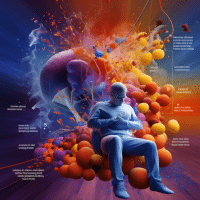Diabetes Hyperglycemic Event Risk – Educational Lecture Series

Has your provider discussed “hyperglycemic crisis” with you?
A hyperglycemic crisis is a situation that occurs in the setting of diabetes wherein the person has either diabetic ketoacidosis or hyperosmolar hyperglycemic syndrome. Each of these are metabolic emergencies that require immediate evaluation and stabilization at the emergency room. Why? Because left untreated, they can be severely debilitating or even lethal.
What is this?
A hyperglycemic crisis occurs when your blood sugar is dangerously high. There are two major types of this condition, which are outlined below:
According to the Mayo Clinic:
Hyperosmolar Hyperglycemic Syndrome
Diabetic hyperosmolar syndrome can take days or weeks to develop. Possible signs and symptoms include:
-
- Blood sugar level of 600 milligrams per deciliter (mg/dL) or 33.3 millimoles per liter (mmol/L) or higher
- Excessive thirst
- Dry mouth
- Increased urination
- Warm, dry skin
- Fever
- Drowsiness, confusion
- Hallucinations
- Vision loss
- Convulsions
- Coma
Diabetic ketoacidosis
Diabetic ketoacidosis signs and symptoms often develop quickly, sometimes within 24 hours. For some, these signs and symptoms may be the first indication of having diabetes. You may notice:
- Excessive thirst
- Frequent urination
- Nausea and vomiting
- Stomach pain
- Weakness or fatigue
- Shortness of breath
- Fruity-scented breath
- Confusion
When to seek help
- You’re vomiting and unable to tolerate food or liquid
- Your blood sugar level is higher than your target range and doesn’t respond to home treatment
- Your urine ketone level is moderate or high
- Your blood sugar level is consistently higher than 300 milligrams per deciliter (mg/dL), or 16.7 millimoles per liter (mmol/L)
- You have ketones in your urine and can’t reach your doctor for advice
- You have many signs and symptoms of diabetic ketoacidosis — excessive thirst, frequent urination, nausea and vomiting, stomach pain, weakness or fatigue, shortness of breath, fruity-scented breath, and confusion
- Your blood sugar level is 400 mg/dL (22.2 mmol/L) or higher and doesn’t improve despite following your doctor’s instructions for treatment.
Have you wondered if you were possibly at risk for this?
Check out this lecture from our Resident Health Coach concerning the latest research on who is at risk for this happening:
Additional references:
https://www.jem-journal.com/article/S0736-4679(13)00357-0/fulltext
https://www.mayoclinic.org/diseases-conditions/diabetic-ketoacidosis/symptoms-causes/syc-20371551


















